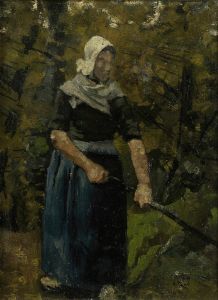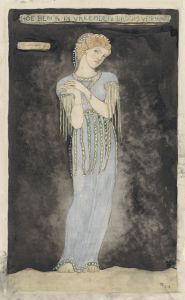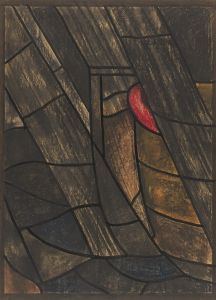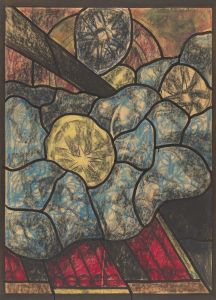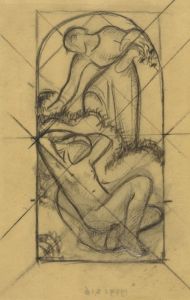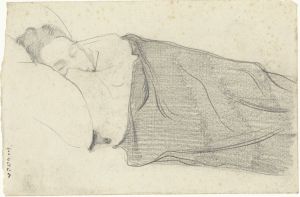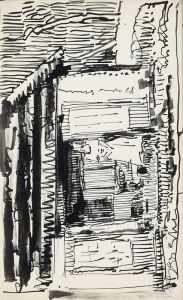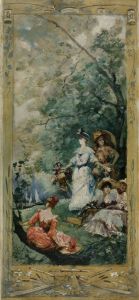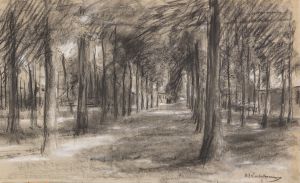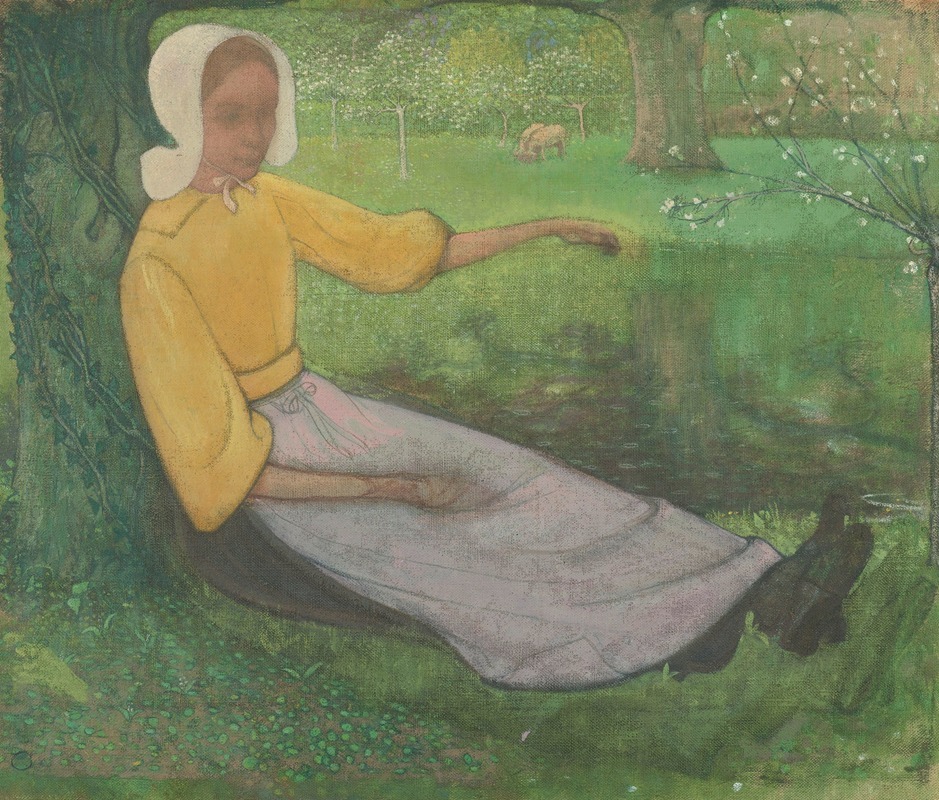
Woman of Huizen sitting under a Tree
A hand-painted replica of Richard Nicolaüs Roland Holst’s masterpiece Woman of Huizen sitting under a Tree, meticulously crafted by professional artists to capture the true essence of the original. Each piece is created with museum-quality canvas and rare mineral pigments, carefully painted by experienced artists with delicate brushstrokes and rich, layered colors to perfectly recreate the texture of the original artwork. Unlike machine-printed reproductions, this hand-painted version brings the painting to life, infused with the artist’s emotions and skill in every stroke. Whether for personal collection or home decoration, it instantly elevates the artistic atmosphere of any space.
Richard Nicolaüs Roland Holst was a prominent Dutch artist known for his contributions to the Symbolist movement in the late 19th and early 20th centuries. Born on December 4, 1868, in Amsterdam, Holst was a versatile artist whose works spanned painting, drawing, and graphic design. He was also a significant figure in the Dutch arts and crafts movement and was deeply involved in the cultural and political life of his time.
"Woman of Huizen sitting under a Tree" is one of Holst's notable works, although specific details about this painting are not extensively documented. The painting reflects Holst's characteristic style, which often included symbolic and allegorical elements. His works frequently depicted serene and contemplative scenes, often imbued with a sense of mysticism and introspection.
Holst's artistic style was influenced by the broader Symbolist movement, which sought to express the metaphysical truths through symbolic imagery and themes. This movement was a reaction against the naturalism and realism that dominated the art world in the late 19th century. Instead of focusing on the external world, Symbolists like Holst aimed to convey the inner experiences and emotions of the human soul.
The setting of "Woman of Huizen sitting under a Tree" suggests a connection to nature, a common theme in Holst's work. The village of Huizen, located in the province of North Holland, was known for its picturesque landscapes and traditional Dutch architecture. It is possible that Holst was inspired by the natural beauty and tranquility of this region, which is reflected in the serene composition of the painting.
Holst's work often featured strong, confident lines and a muted color palette, which can be seen in this painting. His use of color and form was intended to evoke a sense of calm and contemplation, inviting the viewer to reflect on the deeper meanings behind the imagery. The depiction of a woman sitting under a tree could symbolize a connection to nature, introspection, or a moment of rest and peace.
In addition to his work as a painter, Holst was an influential teacher and writer. He served as a professor at the Rijksakademie van Beeldende Kunsten in Amsterdam, where he mentored a generation of Dutch artists. His writings on art and society reflected his belief in the transformative power of art and its role in shaping a more just and equitable world.
Holst's contributions to the arts were recognized during his lifetime, and he was a respected figure in Dutch cultural circles. His work continues to be appreciated for its beauty, depth, and the unique perspective it offers on the human experience.
While specific details about "Woman of Huizen sitting under a Tree" may be limited, the painting remains a testament to Holst's skill as an artist and his ability to capture the subtle nuances of human emotion and the natural world. Through his art, Holst invites viewers to explore the symbolic and the spiritual, encouraging a deeper understanding of the world around them.






